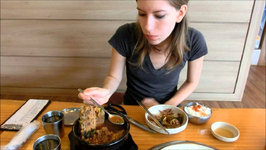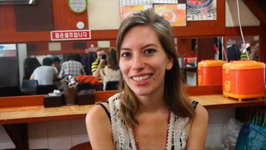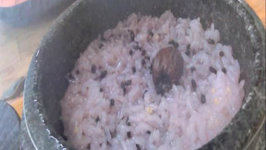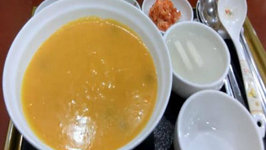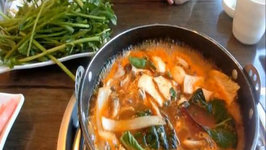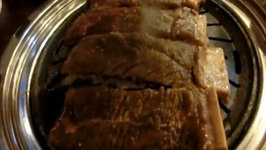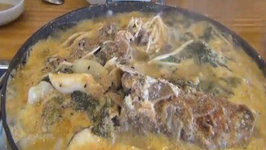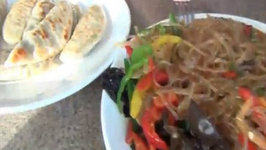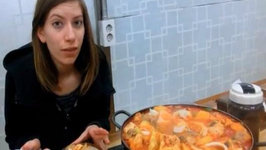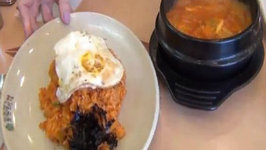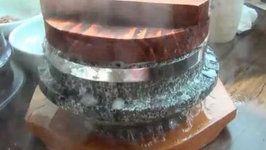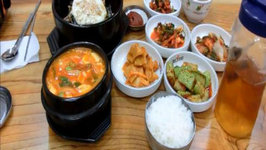Eating Korean Ox Bone and Brisket Soup (Seolleongtang) for Breakfast
Early on a frigid Saturday morning we ventured off to a 24 hour Korean restaurant specializing in Seolleongtang to eat Korean Ox Bone and Brisket soup for breakfast. This winter - more than any other spent in Korea - has been especially bone chilling cold. Although the restaurant seemed like a short distance from Audrey's Korean apartment when we walked by it in the summer, it ended up being a longer trip than we anticipated this time around and we arrived feeling frozen and in need of warm food and drinks. We noticed the restaurant was packed with an array of different dinners some were hungover Korean men joined at table loudly yelling at one another while other tables included families with their children. Overall, the atmosphere of the restaurant and the heated floors (ondul) was very appealing as we were able to warm up quickly however, we didn't find the food quite as good. Seolleongtang is a Korean style broth based soup made from ox leg bones and brisket with seasonings that include pepper, red pepper, garlic, salt and onions. It has a murky white like milky appearance and is rather bland. Audrey and I both love spicy, flavorful and savory Korean soups and stews such as Haejon Gook and Kimchi Jiggae. Honestly, we didn't find the dish very appealing but we did enjoy the atmosphere of the restaurant, so we may (if time permits) come back to try something else in our final few days in Korea. This soup was quite bland and lacking in key ingredients and spices. We did finish our meal (and it was decent enough) but we don't see ourselves trying this one again. It's odd because we love most Korean cuisine and we've been willing to give certain dishes a second chance, to see if we can acquire a taste for it however, this one was so bland I don't think we'll ever eat it again. Seolleongtang is a Korean broth tang (soup) made from ox bones (mostly leg bones), brisket and other cuts. Seasoning is generally done at the table according to personal taste by adding salt, ground black pepper, red pepper, minced garlic, or chopped spring onions. It is a local dish of Seoul. Seolleongtang is typically simmered over a low flame over a period of several hours to an entire day, to allow the flavor to be gradually extracted from the bones. It has a milky off-white, cloudy appearance and is normally eaten together with rice and several side dishes the rice is sometimes added directly to the soup. In the Joseon dynasty, Koreans regularly made nationwide sacrifices to their ancestors, such as Dangun (the legendary founder of the kingdom of Gojoseon). The nationwide sacrifice was called Seonnongje (hangul, hanja:, Seonnong meaning "venerated farmer"), and the altar for the sacrifice was called Seonnong dan ((hangul, hanja:, which dates back to the Silla Dynasty. King Seongjong had visited the sacrifice himself, and had eaten a meal with the people of Joseon. In order to increase the food supply in Joseon, King Seongjong ordered them to invent dishes that could feed the maximum number of people using the least amount of ingredients, and seonnongtang (tang meaning "soup") was one of these. Seonnongtang is now called seolleongtang for easier pronunciation. The phonetic values have changed as follows.




